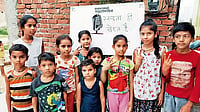The ‘What India Eats’, a 2017 study published by the Indian Council of Medical Research (ICMR) reveals a high-calorie catastrophe – undernourished bodies with full tummies. The study, conducted on the ground by the National Institute of Nutrition, points to the overwhelming cereal-based diet people consume, particularly in rural areas. The ICMR-NIN researchers found that 65 per cent of the calories consumed in rural India come from cereals, against an acceptable upper limit of 45 per cent. On average, Indians consume 6.8 kilograms of rice in a month.
In short, pushing subsidised cereals through an elaborate public distribution system (PDS) ensures that a vast majority of Indians consume far more starch than they should, setting aside pulses, legumes, vegetables, nuts and animal-based diets like milk.
Diversify the palate
A second subject that the ICMR-NIN report presses on is the need to diversify the food plate.
“For the elimination of all forms of malnutrition, there is an urgent need to create awareness among households for inculcating healthy dietary practices and improve (the) consumption of locally grown and available protective foods,” the study suggests as if batting for that diverse Indian thali.
This is exactly what the annual Global Hunger Index report has said year after year when it underlined the phenomenon of ‘hidden hunger’, or plainly, the unnoticed deficiencies of vitamins and minerals.
Governments have found it difficult to digest international agencies reports saying that much of India is not getting a good dose of nutrients and micronutrients. Undernutrition is discernible from the spread of low birth weight, low upper-arm circumference and stunting among children besides anaemia among women and children.
The Global Hunger Index study is vehemently (and ritually) denied by the government. But there is a studied silence on the ICMR study.
Clearly, India needed a magic bullet to address its nutritional under-achievements. That magic bullet came in the form of the world’s largest fortification drive announced by Prime Minister Narendra Modi in his independence day speech in 2021 from the ramparts of the Red Fort. Fortified rice, he said, would be provided to every household benefiting from food security and mid-day meal schemes by 2024. This would address undernutrition, particularly anaemia, he said.
Food fortification
The Food Safety and Standards Authority of India (FSSAI) claims that “food fortification is a scientifically proven, cost-effective, scalable and sustainable global intervention that addresses the issue of micronutrient deficiencies.”
But its claim of fortification being “scientifically proven” is slanted because the jury is still out on the subject. Government circles refer to four studies monitoring infants, children and women to demonstrate the effectiveness of fortified rice in improving micronutrient status.
But there has been an unusual shyness to discuss these in public.
The government has yet to carry out an evaluation of the impact of fortified rice it pushed through the PDS system as part of a three-year pilot scheme on the fortification of rice and its distribution. This pilot was initiated in 2019 and had a budget outlay of Rs. 174.64 crores.
In a reply to a question posed under provisions of the right to information act (RTI), the Ministry of Consumer Affairs, Food and Public Distribution told the NGO Greenpeace India that, “Third-party evaluation of the ongoing pilot scheme is due in the third year i.e. in 2021-2022,” which hasn’t been done yet.
In response to another RTI question from Greenpeace India, ICMR-NIN have said that no study had been conducted to find the impact of the chemically fortified food on the health of pregnant or nursing women and children five years of age or undernourished and malnourished children.
ICMR also said that a double blind randomized controlled study on fortified rice served as part of their mid-day meal served to government primary school children showed that “iron fortified rice has a similar effect as mid-day meal on improvement in anaemia.”
This reply gives ammunition to anti-fortification campaigners who have all along questioned government claims that fortified rice could be helpful in eradicating anaemia.

Food empowerment
Greenpeace India says that the ICMR study points to the need for boosting mid-day meal schemes to address malnutrition and anaemia – all that the government needs to do, the organisation says, is to improve the delivery and ensure that the food served is diverse.
The Right to Food campaign, at the forefront of the campaign against food fortification also has been demanding conclusive scientific evidence of the effectiveness of fortified rice.
“The massive investments and irreversible changes in the name of food fortification are not preceded by any ex-ante in-country impact assessment studies that are in the public domain,” says a publication of the Right To Food campaign. “While the benefits are unproven, there are serious concerns around over-dosing of iron, which can be highly toxic if not monitored carefully.”
Besides, there is loads of evidence to point that help and encouragement to the poorest village woman to raise a kitchen garden can provide her family with far more nutrition that any fortification drive can achieve.
“Solutions to anaemia, hunger and malnutrition can only be resolved by introducing diverse foods like several cereals, pulses, fruits, vegetables and even animal foods into the diet rather than looking for a one bullet solution like fortification,” says Dr Veena Shatrugna, Former Deputy Director of the National Institute of Nutrition.
There is also evidence available that tribal communities got a good deal of their micronutrients from the forests – this has come to a stop though, because foresters have kept away tribal gatherers from entering forest areas (that is a subject for another debate).
In the government’s scheme of things, a kilo of a powder of iron, vitamin B12 and folic acid will be added to a quintal of powdered rice. The mixture will be reconstituted into small rice-grain shaped pellets and pushed through different food schemes.
That is what fortified rice is.
But consumers are finding it difficult to digest this rice. Volunteers from the Right to Food campaign say that people in the villages of Jharkhand have complained of upset stomachs. They also say that the rice is not fit for consumption if kept aside overnight – as a normal, cultural practice.
Do governments have to control the exact nature of the rice people consume through a mandatory fortification drive? Is food fortification corporate-driven? Why are diverse local and natural solutions revolving around enhanced dietary diversity neglected?
The Right To Food campaign has a serious point here. “Entities that will benefit from the rice fortification push are even housed in regulatory bodies like FSSAI,” it says. “These vested interests are wielding disproportionately enormous influence on policy decision-making even as the primary stakeholders like poor communities have not been informed or consulted.”
Clearly, the government’s move to thrust fortified rice is only going further to open a Pandora’s box.
(Bijoy Patro is Editor of OneWorld SouthAsia. Views expressed in this article are personal)






















